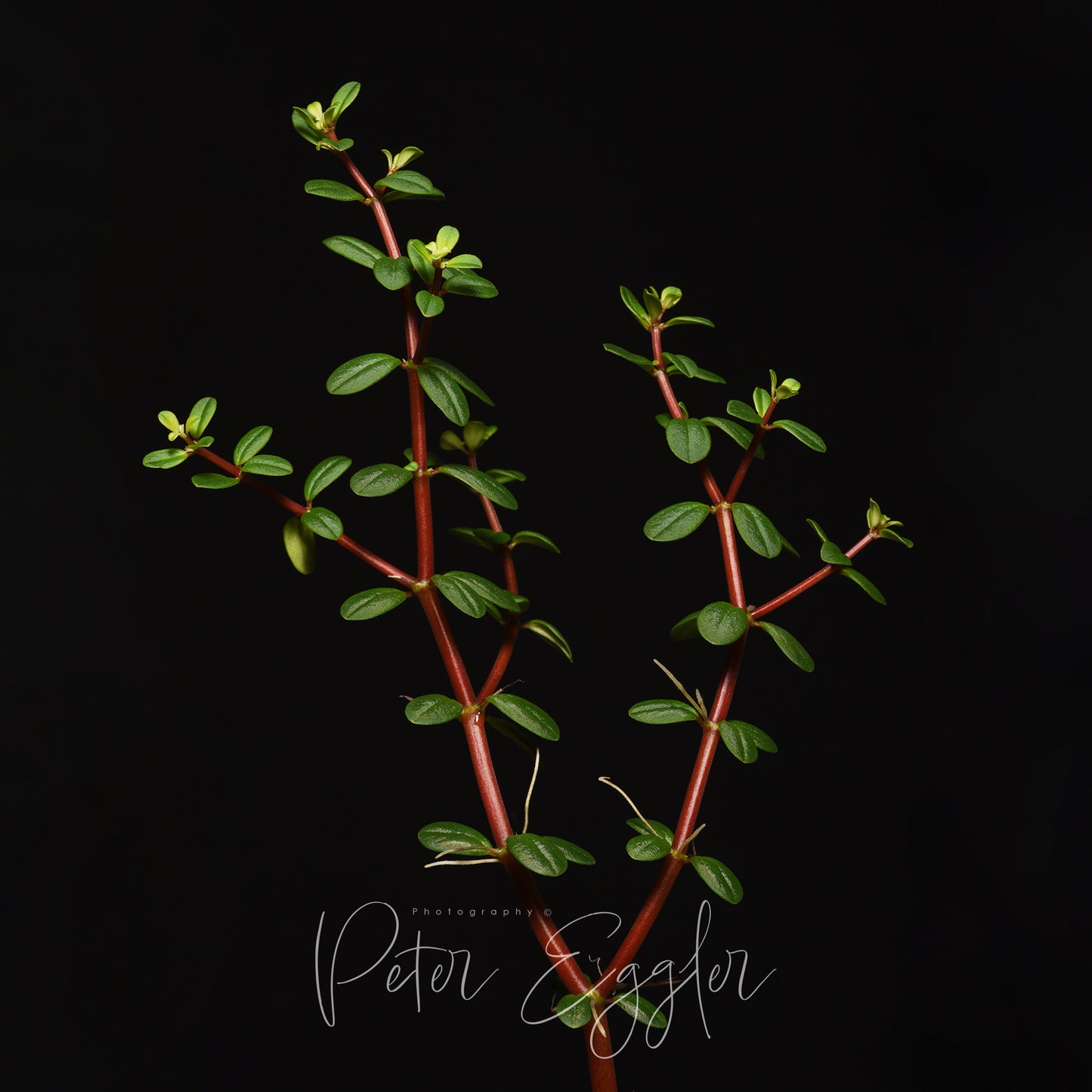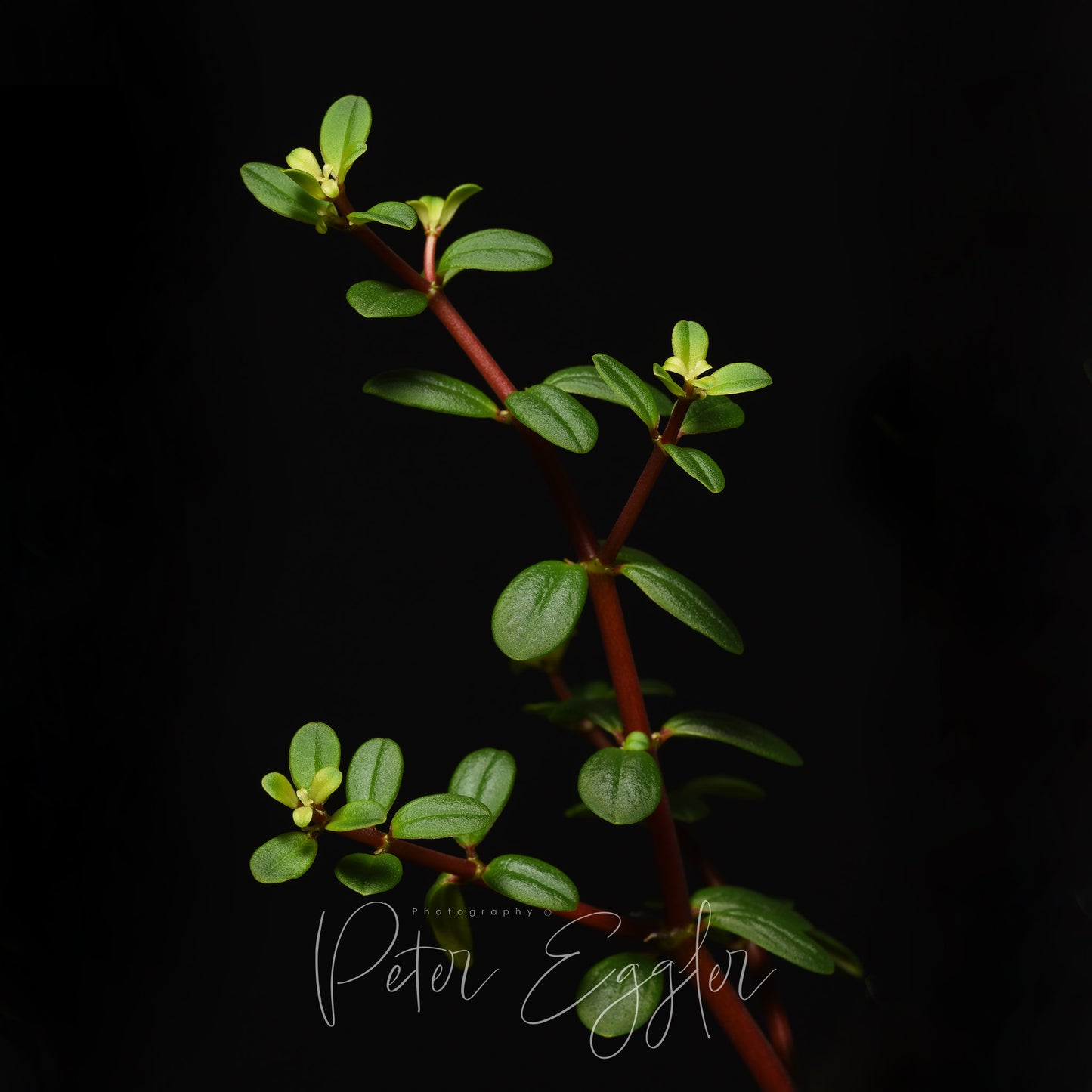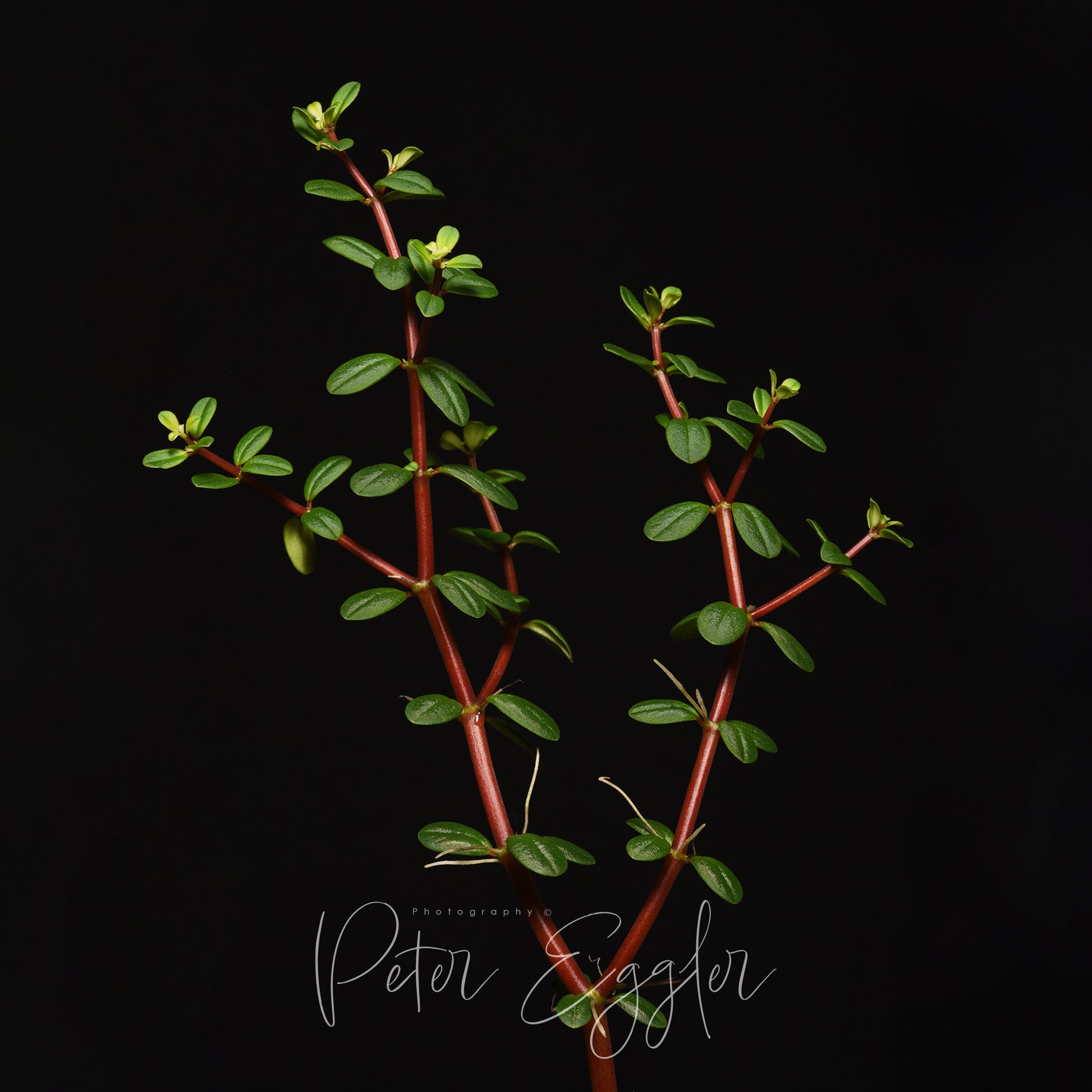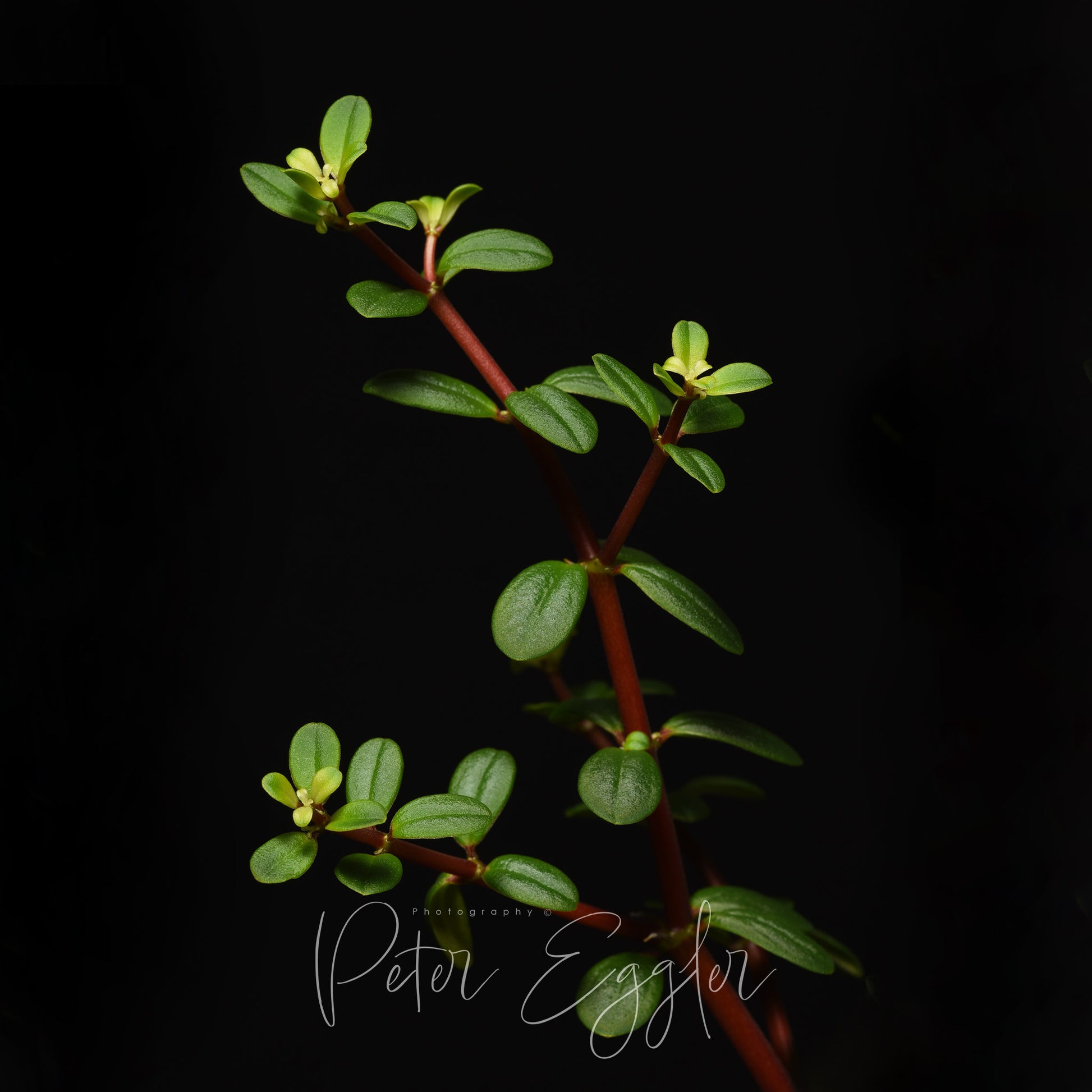Peperomia ×enervis
Peperomia ×enervis
Out of stock
Plant Size/Portion Size:
Plant Size/Portion Size:
Couldn't load pickup availability
Plant Name: Peperomia ×enervis
Tankquility Catalogue #: TQ-05025
Synonyms/Trade Names: Peperomia johnsonii
Original Plant Sourced as: Peperomia enervis
Plant Family: Piperaceae
Plant Native to1: Australia (N.E. Queensland). A natural hybrid - Wilson, A.J.G. (ed.) 2007. Flora of Australia 2: 1-486 (as reported in Plants of the World Online).
Plant Type: Epiphytic, lithophytic
Image Details2:
Image 1: Terrarium grown Peperomia ×enervis
Image 2: Closer view showing glabrous nature of stem and leaves of Peperomia ×enervis
General Information and Cultivation3: A very slow growing, moisture-loving rainforest Peperomia. Maximum leaf blade size is 18mm×9mm. Like for many in the genus, ultra-high humidity in a terrarium promotes a scrambling growth form. This clone is naturally branching. Plant it into a free draining substrate and train to climb up wood and rocks. Peperomia ×enervis prefers humid terrarium conditions with a small amount of ventilation. Tankquility cultures this clone at about 23° Celsius, in a granular substrate based on akadama and scoria. Fertilize moderately.
Note: Another Australian rainforest Peperomia named Peperomia hunteriana is often incorrectly sold as Peperomia enervis. Peperomia ×enervis is much slower growing than Peperomia hunteriana and is not readily available in the nursery trade.
Propagation by leaf and stem cutting is easy.
Ease of Care: Easy
Plant Size/Portion Size:
Cutting: Branched tip cutting of around 100mm in length, with possible adventitious root development.
Further Reading:
Forster, P.I. (1993). A taxonomic revision of the genus Peperomia Ruiz & Pav. (Piperaceae) in mainland Australia. Austrobaileya 4 (1): 93-104.
1 Distribution is taken from Plants of the World Online (https://powo.science.kew.org/) unless stated otherwise.
2 All images used on the Tankquility website have been taken of plants growing in our nursery.
3 The general and cultural information provided is based on our own experience and observation. If we supply information from others, we have acknowledged the source.
SKU:
View full details

-
Plants can alter their appearance due to seasonal influence, or in response to different environmental conditions or stage of maturity. This phenomenon is known as phenotypic plasticity, and it is especially evident in Aquatic/Semiaquatic plants. Whilst we endeavour to portray a plant accurately, the plant you receive may have been growing under different conditions or be at a different stage of maturity to the one in the image(s) provided.
How we package your plants...
-
Aquatic/Semiaquatic plants will be shipped bare-rooted and wrapped in damp paper for protection when required.
-
Terrestrial/Epiphytic plants will be shipped bare-rooted and the roots wrapped in damp sphagnum moss for protection when required.


